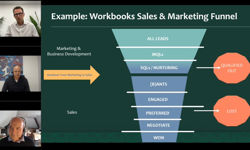It sounds counter-intuitive, but as these harsh economic winds force a greater level of scrutiny on corporate spending than possibly ever before, there are more than a few magazine publishers signing up to promotional activity they’re not convinced will do much to lift sales.
While ABC figures for the latter half of last year show there’s increasing consumer interest in hobby titles, soap opera mags and personal finance titles, publishing is not generally a recession-proof business, and media owners in the UK are finding the going particularly tough. Forecasts by media analysis giant Group M, in their latest ‘This Year Next Year’ global report on advertising investment, shows the UK to be one of the hardest-hit of the big European economies, with a forecast decline in total ad spend of 13.7% this year on last year. This compares to a dip of 2.2% in Germany and 6.2% in France.
In a sense, then, the time would seem right for some vibrant in-store promotion to drive excitement and sales for titles that could do with a lift. “Retail theatre”, as it’s known, offers publishers in-store promotional formats ranging from cardboard cut-outs that cover the doorway security systems, to branded doormats and exclusive free gifts with purchases.
Colin Massie, managing director of retail promotions company Absolute Concepts, says retailers are increasingly open to new ideas. “There’s more flexibility because people are wanting to drive promotions to drive sales,” he says. Hot at the moment are bundling deals in which publishers pack two titles together in a poly bag for a special price exclusive to one retail chain. Also in high demand, it seems, are newscubes – perspex units for displaying national newspapers, with slots at the top where magazines can go – ideal for topical weekly news titles. The range of promotional mechanics available in different retail outlets is vast – from whole-store branding that requires bespoke production, to small-scale, cheaper executions for those with smaller budgets. Retail promotions are usually easy to cost; the major retailers each have standard price lists that are updated every year. So far, so good.
Yet industry insiders say that up to 50% of what specialist publishers are spending on retail promotions in some stores is unwanted, and is money they can ill afford to spend much less waste. The trouble is, they can’t afford not to spend it either.
Caught between a rock and a retailer
The relationship between retailers and publishers is that of frenemies. On the one hand, they each stand to gain from the success of the other so have an interest in getting along. The retailer wants a variety of titles to attract consumers, and the publishers want as much exposure to as many potential readers as possible. On the other, however, their relationship is by its very nature one fraught with tension, and given that a few retailers dominate the market, and there’s a huge number of magazines competing for space and prominence on their shelves, retailers can drive a hard bargain when establishing the terms of their relationship with each.
In practice, this means that they can insist on minimum levels of spend on in-store promotions. For those that want to object, there’s the ever-present fear of being shown the door. This is no different to the situation faced by most manufacturers whose products are sold by major retailers. One industry observer notes that in fact, magazine publishers’ spending on retail promotions is less than half that of the major fast-moving consumer goods brands in grocery stores.
All retailers charge for display space and promotions, and in general the cost of each execution this year is up a little on last year’s list prices. Naturally, as with groceries, some magazine retailers have bigger muscles to flex in this area than others. WHSmith, with more than 500 High Street stores and more than 120 outlets at airports, train stations and motorway service areas, is widely seen as the most aggressive in its demands of retailers to spend plenty on in-store promotions, and to keep increasing that spend every year. Martin McColl is another that industry insiders say make a certain level of promotion – or at least the spending on it - a prerequisite of being stocked.
Most of the big supermarkets don’t demand a fixed level of spending on promotions, though there is indirect pressure to maintain a high profile in-store. “If a title’s sales do not remain sufficient to justify its place, it can be delisted, so promotions help drive sales,” one source says. Publishers usually bid for promotions in these stores, and “are generally spending money because they want to drive sales. The promotion money invested here is part of a plan that the publishers want run.” ASDA has a slightly different system to the other supermarket chains, that lies somewhere between the Smiths model and that of the other big grocers.
Squeezed out
The pressure on publishers to invest in retail promotions is not a new phenomenon, but what’s making it particularly painful at the moment is weak consumer sentiment, the struggle for advertising revenue and rising paper costs. “There’s been a sharp increase in the past three to five years in the level of expected investment we’re being asked for by retailers in their promotional mechanisms,” says one publisher of specialist magazines. “We can’t pass on those costs in the cover price, and that fear of being delisted is where you’re being held over a barrel. You’re just not brave enough to say no, and you have to cave in.”
Specialist publishers have a lot to lose by saying “no” to retailers’ demands; for some, up to 50% or even 60% of retail sales are reliant on their presence in WHSmith High Street stores alone. This makes them a must-have partner, yet the publishers’ dependence gives Smiths bargaining power that leads to them being seen as squeezing publishers unreasonably hard.
“There will be a high proportion of the total amount spent in WHS High Street that is not being spent on promotions that the publishers would necessarily want to invest in,” says one industry player. “I would say as much as 50%.”
“It’s not that we don’t agree with the ethos of a retail promotional mechanism, because ultimately both retailer and publisher want more copy sales,” one publisher says. “But we often find the ROI is really hard to see. You then start to wonder whether all you’re doing is adding to their bottom line.”
Mike Mirams, managing director of COMAG, the marketing and distribution company owned jointly by the National Magazine Company and Condé Nast Publications, agrees that discussions with retailers over promotional spend are tough, particularly for the more niche publications.
“It's very difficult for specialist titles because Smiths can account for 50% or more of their sales,” he says. “It's certainly very challenging; we have tough negotiations with retailers like Smiths all the time. So far, we've been able to find a way through to mean that most titles stay available to consumers. We do have to recognise they carry a broad range and we absolutely want to see a healthy WHSmith.”
Strength in numbers
The wide availability of the internet – and possibly a new consumer emphasis on shopping around for the best price – is helping lift magazine sales through subscriptions. The PPA points to the most recent ABC figures, showing that while retail sales volumes dropped 8% year-on-year, subscription sales rose by over 1%. This means that subs account for 27% of monthly magazine sales – a 1.4% increase this year – and for 10% of weekly magazine sales – up 1 percentage point.
The idea of cutting out the middleman entirely is still a long way off, however. “Ultimately, the news trade will always be the best shop window, and you always want a healthy balance between subs and shop sales,” says one publisher.
The Economist had a very public falling out with Smiths High Street a couple of years’ ago over retail promotions, which led to it being de-listed for a brief time, though the matter was resolved and the title was back on shelves within months. Other titles have found it impossible to come up with the money that’s required to stay in stores.
“There's a point where it becomes unsustainable,” says COMAG’s Mirams. “For many publishers we've reached that point already. There are a few already turning to online offerings only. There are lots of examples of titles that have limited availability because they're no longer able to fund a presence in Smiths, but that happens in all retailers to some extent - if you don't sell, you can't justify your presence.”
Several publishers have told InPublishing they want to see a united front against the pressure to maintain spend on promotions, particularly from WHSmith. “If we all stood shoulder-to-shoulder maybe this would change,” one says.
The PPA (Periodical Publishers Association), however, says its hands are tied. “Clearly we take a keen interest in industry developments, but it would be a breach of competition law for PPA to get involved in commercial negotiations between PPA publisher members and their customers or suppliers,” says director of circulation, Nicola Rowe.
COMAG’s Mirams says common sense should prevail. “Retailers will have to be realistic about what publishers can spend. Publishers are not going to be able to come up with more and more money every year. The economic environment certainly isn't helping … but it's the same for Smiths - they're trying to reach their own targets.”
In reporting its latest financial results, in mid-April, WHSmith said the magazine market “continues to be challenging, particularly for monthly magazines.” A WHSmith spokesperson said it was company policy not to comment in any detail on arrangements with its suppliers, but emphasised that in-store space was limited, and that at the front of stores was always at a premium.
“Magazine margins are low compared to categories like books and stationery,” the spokesperson said. “In the case of niche publishers, it’s sometimes very difficult for us even to make a small profit. However, it’s very much the case that rather than de-listing them, we will discuss the number of stores the magazines are listed in to ensure they are only in stores where they are profitable. We work with the publishers to find other routes to market to increase profitability for all parties.”
Can’t live without ’em
Industry specialists suggest publishers who can’t afford not to be with the big chains such as Smiths plan well ahead and do early deals in order to get the promotions that are most likely to have a real impact on sales.
“If you commit to retail spend then it pays to have a consumer offer, price offer or unique editorial offer to back that spend if you can,” one says. “Display innovation is important, but you need added oomph at the moment.”
Another advises: “The way to deal with it is not to merely say no. Have a clear plan that articulates the objectives and sales targets, reiterates the brand strengths and has a sensible promotional budget. If you’re armed with this and you go in early, you have a better chance of a deal that at least has a chance of returning on investment.”










